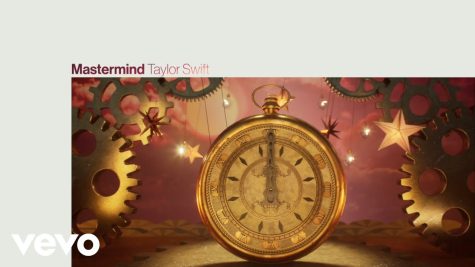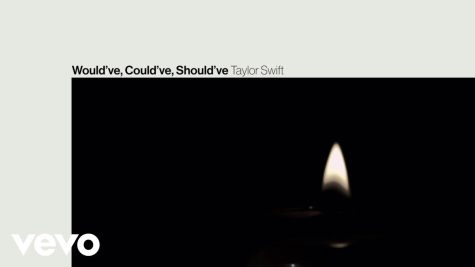‘Midnights’: exploring the mastery of Taylor Swift’s lyrics
“Midnights,” Taylor Swift’s highly-anticipated 10th album, dropped on Oct. 21. The album features 13 songs and an additional seven bonus tracks in the “3am Edition” (deluxe album). Since the album’s release, “Midnights” has broken many records including the most streamed album in a week with 549 million streams as well as Spotify’s most streamed artist and album in a day, and it has made Swift the first artist to occupy the entire top 10 of the Billboard Hot 100. “Midnights” is Swift’s first self-directed autobiographical album and it is by far the most “cryptic and machiavellian” yet. The haunting melodies and captivating lyrics create something for everyone. “Midnights” encapsulates a feeling of development and growth even if it comes with loss, a reflection on the love, fame and other changes in her life. As usual from the mastermind herself, “Midnights” brims with coded poetry, easter eggs and exquisite lyrics. Here are our top four songs decoded.

“Maroon” is the second track from “Midnights.” “Red” is the second track from Swift’s fourth album, “Red.” Is this coincidental? We think not. While “Red” explores the raw emotions one goes through during different stages of love, “Maroon” explores the honest and more regretful side of a relationship. In the chorus, Swift sings, “And I lost you / The one I was dancin’ with / In New York, no shoes / Looked up at the sky and it was maroon.” Swift often plays with colors that convey different emotions, like burning red symbolizing the fiery stages of love, blue symbolizing the feeling of losing someone and grey symbolizing the stages of missing someone who was once a central part of life. Throughout the song, Swift uses over five shades of red to capture the emotions felt near the end of a relationship. “Red is such an interesting color to correlate with emotion, because it is on both ends of the spectrum,” Swift said. “On one end you have happiness, falling in love, infatuation with someone, passion, all that. On the other hand, you’ve got obsession, jealousy, danger, fear, anger and frustration.” “Maroon” highlights all stages of love and loss symbolized by colors.

In the 13th track of “Midnights,” Swift recounts the night she met Joe Alwyn, her current partner. Having already addressed falling for Alwyn at the Met Gala in her song “Dress” from her sixth album “Reputation,” Swift fleshes out the details of that night in “Mastermind.” Previously referencing the idea of fate in her song “invisible string,” Swift uses the verse “Once upon a time, the planets and the fates and all the stars aligned / You and I ended up in the same room at the same time” to allude to the theme of fate in the beginning of her love story. However, she slowly builds up to a rejection of fate, instead placing herself above the whims of the universe when she sings, “What if I told you none of it was accidental / And the first night that you saw me, nothing was gonna stop me / I laid the groundwork and then just like clockwork / The dominoes cascaded in a line.” Swift takes full responsibility as the “mastermind” behind their union, finally revealing that the subject of the song was a willing accomplice: “I laid the groundwork and then saw a wide smirk on your face, you knew the entire time / You knew that I’m a mastermind / And now you’re mine.”

On the album’s “3am Edition,” “Bigger Than The Whole Sky” is a heartbreaking song that explores themes of grief and loss. While Swift has not shared or confirmed the inspiration behind the lyrics, many fans believe that this song is about losing a loved one. Swift sings in the chorus, “Goodbye, goodbye, goodbye / You were bigger than the whole sky / You were more than just a short time / And I’ve got a lot to pine about / I’ve got a lot to live without / I’m never gonna meet / What could’ve been, would’ve been / What should’ve been you / What could’ve been, would’ve been you.” Here, Swift describes the fleeting loss that she experienced which was nevertheless gut- wrenching. As such, many fans speculate that this song could potentially be about a pregnancy loss, combining a different level of grief with devastating, life-altering effects. Swift’s song allows people to find comfort in it and relate to it an empowering way. Another potential interpretation of this song is the narrator addressing their younger self and mourning the life they could have lived. This song relates to the album’s themes of revisiting regrets, self-made enclosures and life-altering changes.

In the “3am Edition,” “Would’ve, Could’ve, Should’ve” explores the devastating aftermath of Swift’s relationship with John Mayer. The two singers dated in 2009, when he was 32 and she was 19. As the 19th track, the song points out Swift’s age during the infamous relationship. “Would’ve, Could’ve, Should’ve” references the 13-year age gap that left Swift broken and blaming herself for the pain she went through. In the chorus, she sings, “And the God’s honest truth is that the pain was heaven / And now that I’m grown, I’m scared of ghosts / Memories feel like weapons.” This line captures the complex feelings of having been preyed on by men at a young age and the difficult journey of recovery. The vulnerability throughout the song exposes her honest emotions as she looks back on the relationship. “Would’ve, Could’ve, Should’ve” is a sequel to “Dear John,” which Swift released in her third album, “Speak now.” In “Dear John,” Swift sings, “Don’t you think nineteen’s too young / To be played by your dark twisted games / When I loved you so?” Here, Swift sings about feeling like her girlhood was stolen, which she also references in “Would’ve Could’ve Should’ve”.

![[PHOTO COURTESY OF REPUBLIC RECORDS]](https://blueandgoldonline.org/wp-content/uploads/2022/12/midnights-cooo.jpg)
![[PHOTO COURTESY OF SPOTIFY]](https://blueandgoldonline.org/wp-content/uploads/2025/03/IMG_3468-600x297.jpeg)
![Tyler, The Creator, American rapper and record producer, reaches out his hand. [PHOTO COURTESY OF COLUMBIA RECORDS]](https://blueandgoldonline.org/wp-content/uploads/2025/01/IMG_2935-600x311.webp)
![Shawn Mendes performs at the 2024 MTV Video Music Awards. [PHOTO BY KEVIN MAZUR/ THE HOLLYWOOD REPORTER]](https://blueandgoldonline.org/wp-content/uploads/2025/01/IMG_2936-600x338.jpeg)
![[PHOTO COURTESY OF INTERSCOPE RECORDS, EPIC RECORDS, CACTUS
JACK & ATLANTIC RECORDS]](https://blueandgoldonline.org/wp-content/uploads/2025/01/Untitled-design-600x200.jpeg)
![NewJeans releases their new EP. [PHOTO COURTESY OF NEWJEANS KR]](https://blueandgoldonline.org/wp-content/uploads/2023/12/nj-600x400.jpeg)
![[PHOTO COURTESY OF PENGUIN RANDOM HOUSE, PENGUIN BOOKS, PENGUIN BOOKSHOP]](https://blueandgoldonline.org/wp-content/uploads/2025/05/books-600x338.png)
![A large "Coulda Been Love" sign in front of the show set. [PHOTO COURTESY OF DRUSKI'S COULDA BEEN LOVE SHOW]](https://blueandgoldonline.org/wp-content/uploads/2025/05/IMG_1877-600x339.jpeg)
![[PHOTO COURTESY OF IMDB]](https://blueandgoldonline.org/wp-content/uploads/2025/05/Untitled-design-2-600x450.png)
![[PHOTO COURTESY OF IMDB]](https://blueandgoldonline.org/wp-content/uploads/2025/05/MV5BY2UwOGUxMzEtMzEyZi00NjEwLTkxOTMtYTljOWEzYjYyMWNjXkEyXkFqcGc@._V1_-405x600.jpg)
![[PHOTO COURTESY OF IMDB]](https://blueandgoldonline.org/wp-content/uploads/2025/03/IMG_3463-600x362.jpeg)